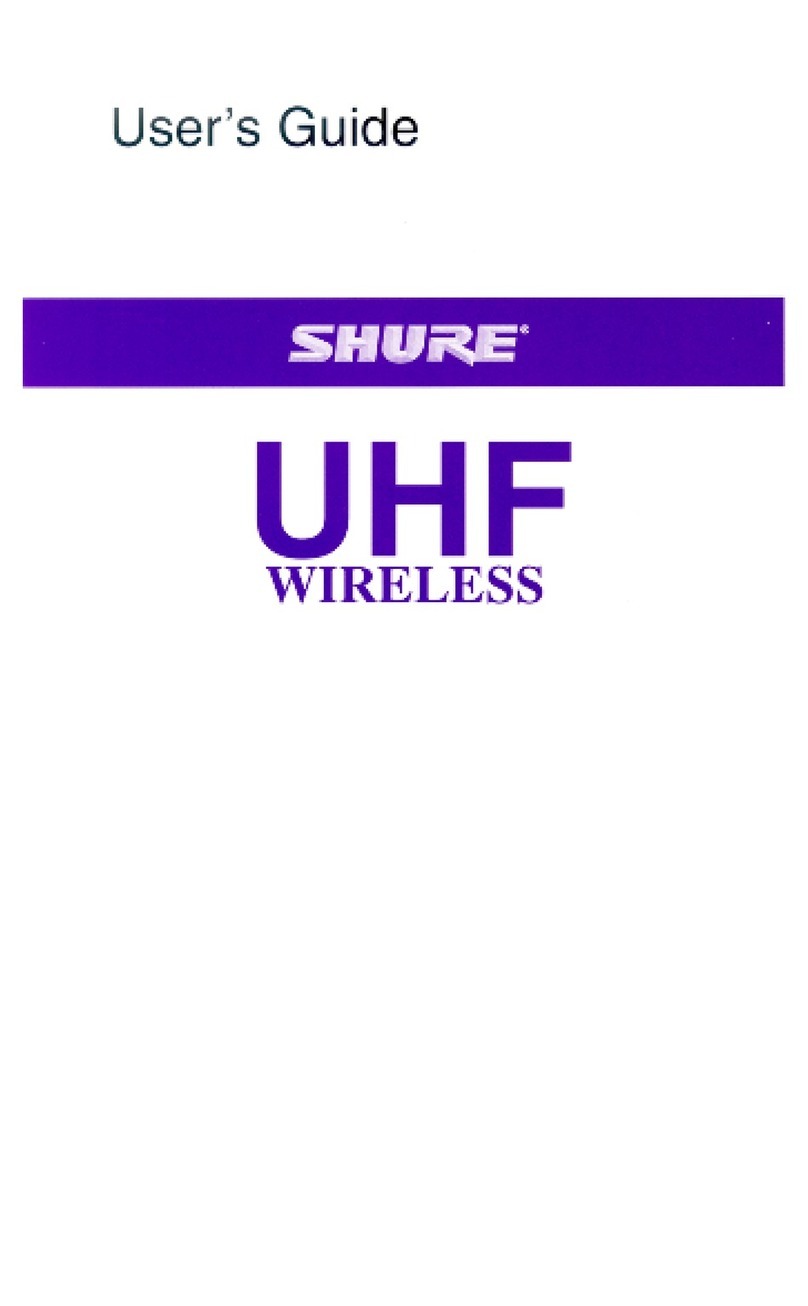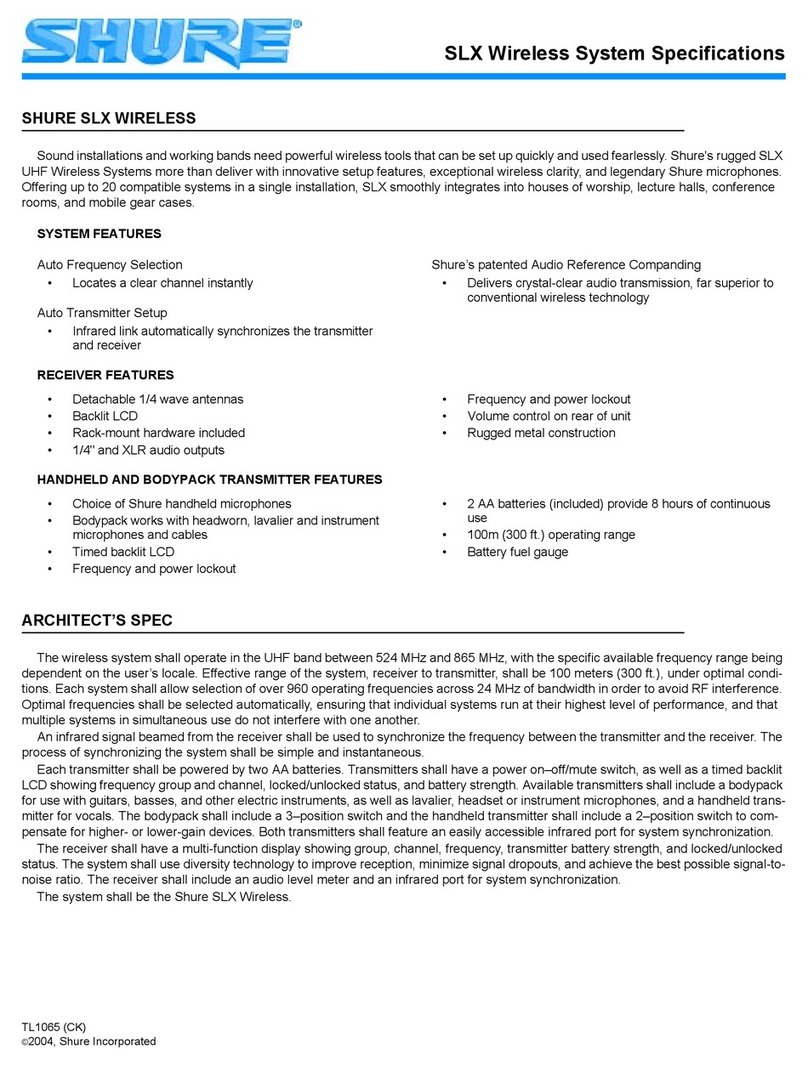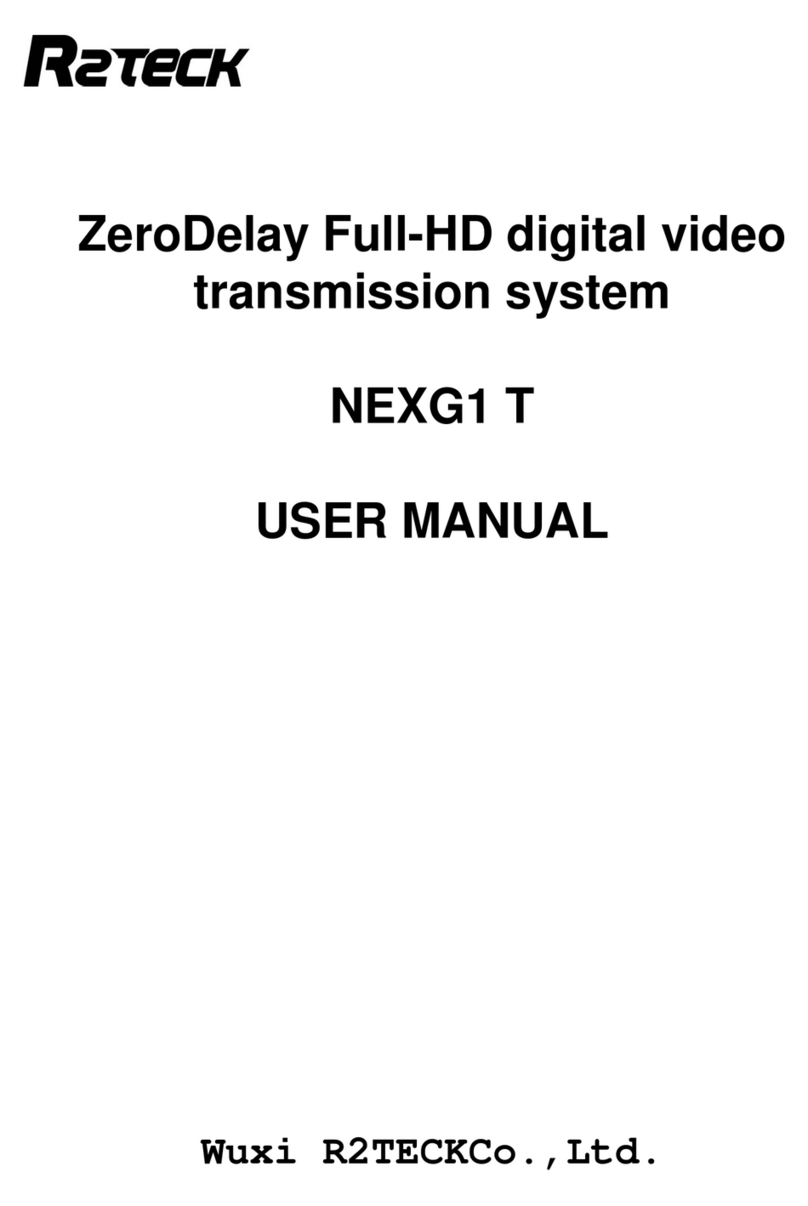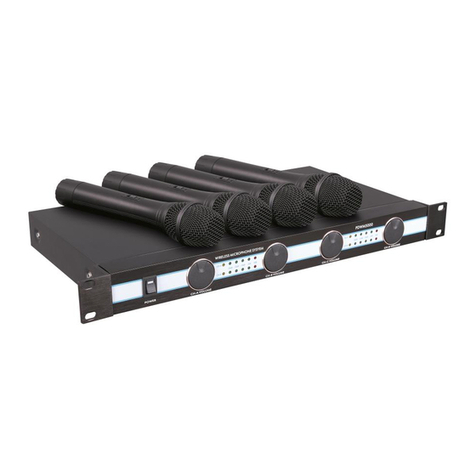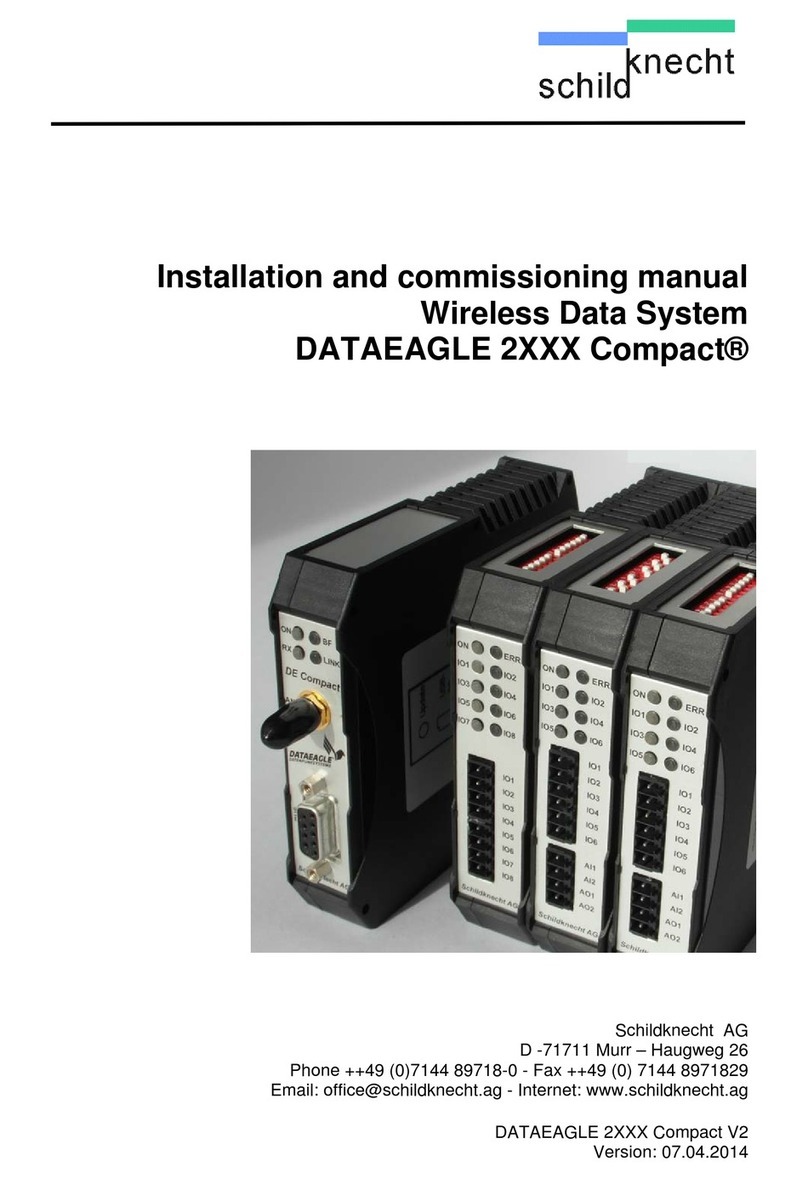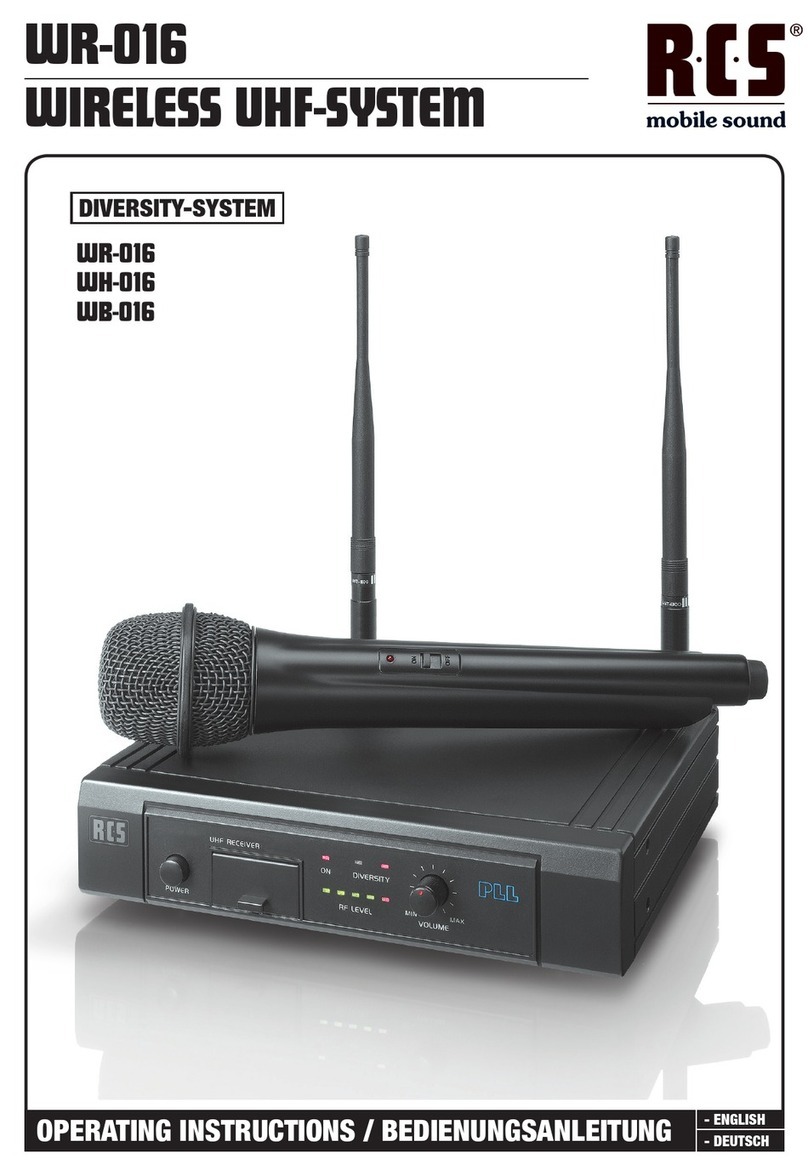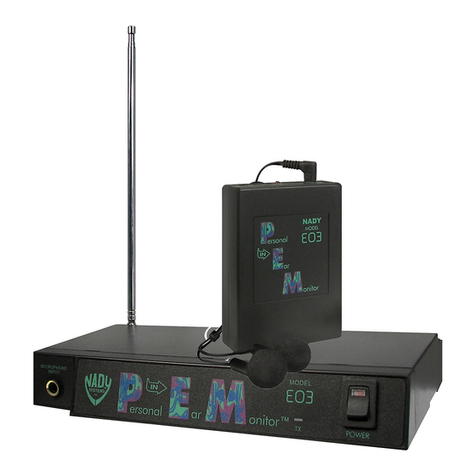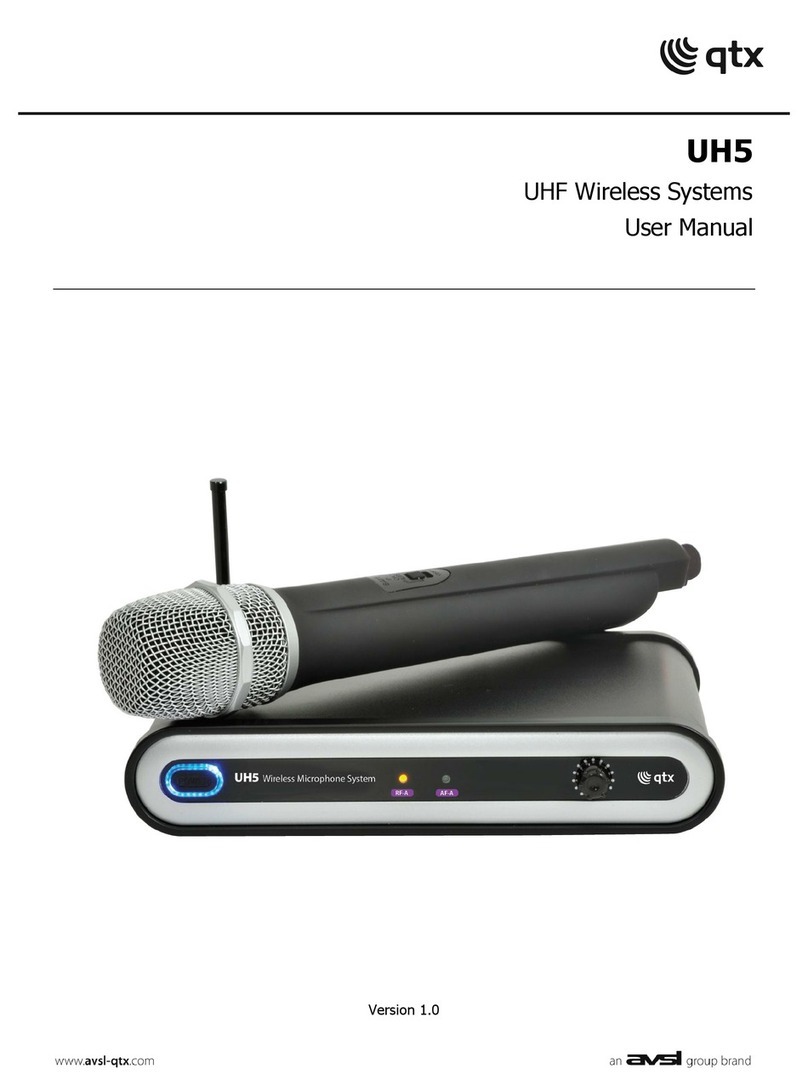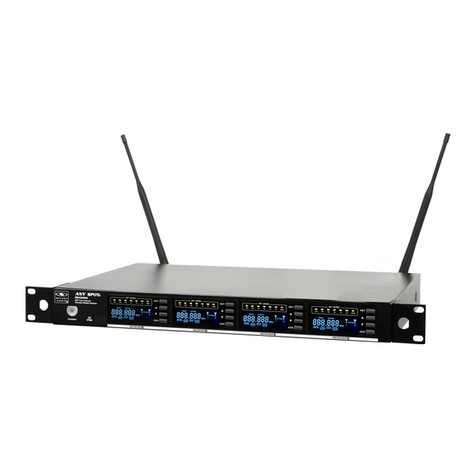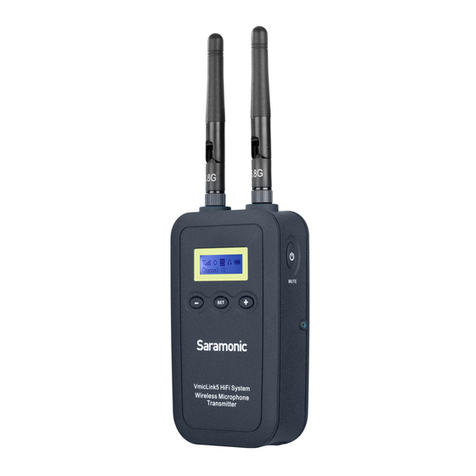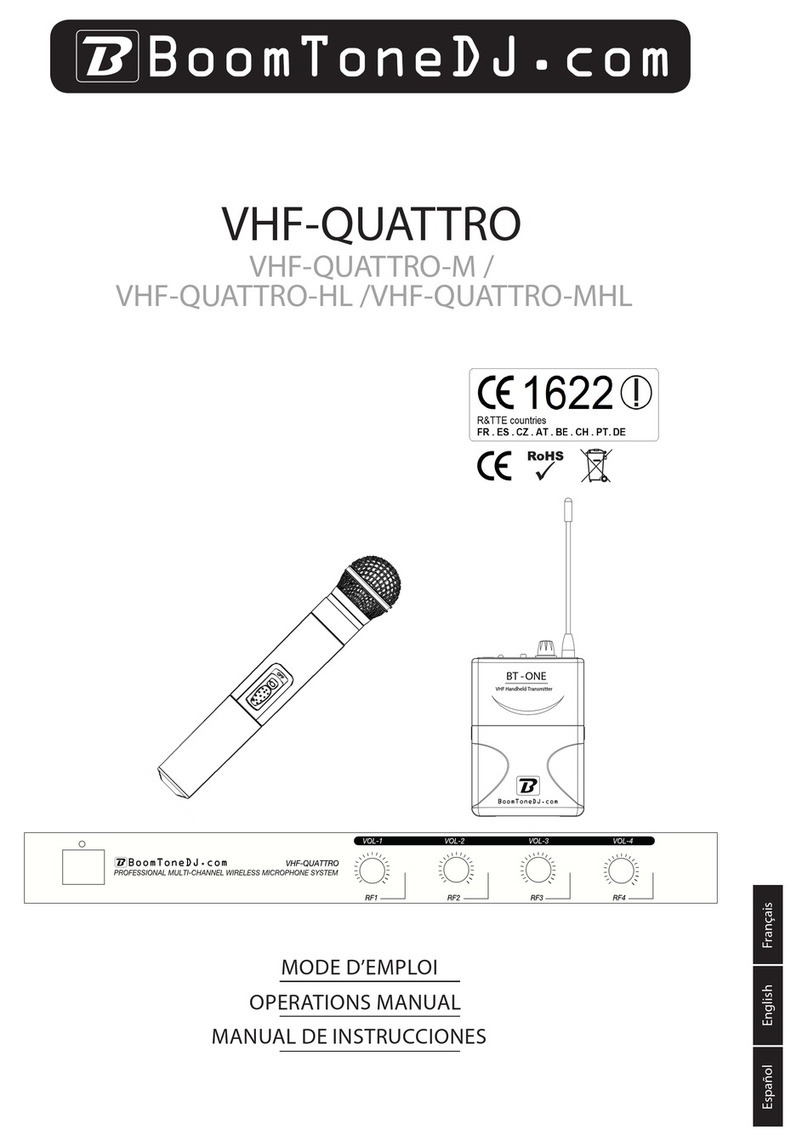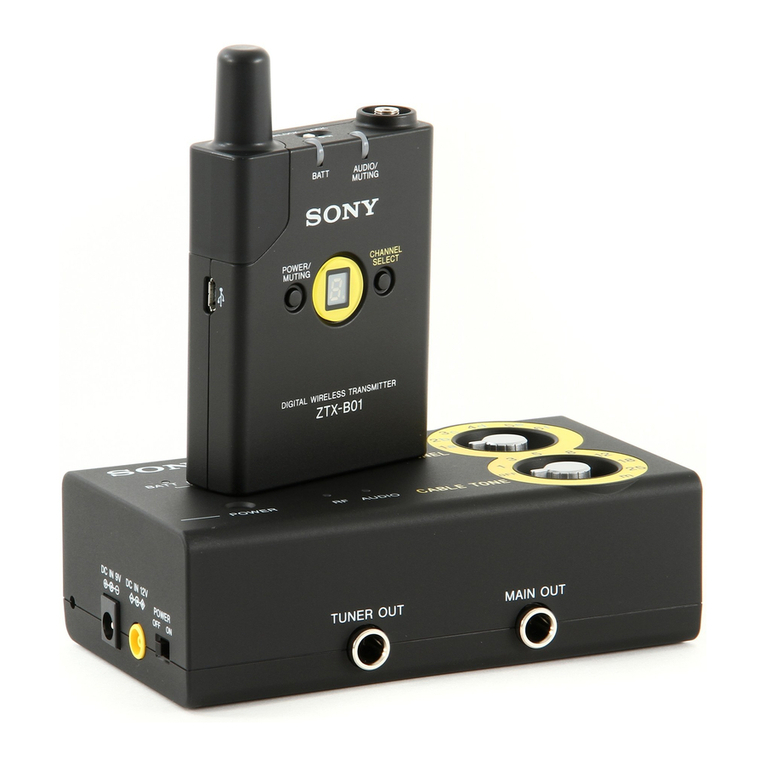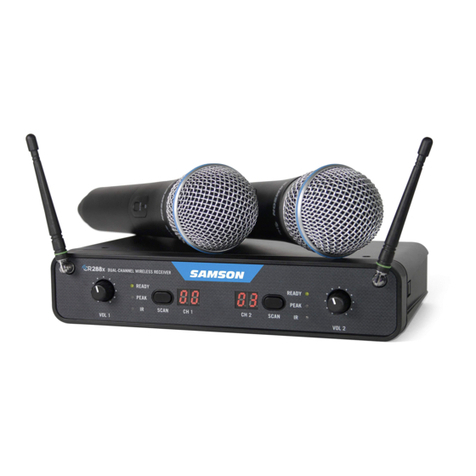Huawei OptiX RTN 600 Technical specifications

OptiX RTN 600 Product Description

OptiX RTN 600 Radio Transmission System
Product Description
Document Version 01 (2007-01-25)
Product Version V100R001
Huawei Technologies Co., Ltd. provides customers with comprehensive technical support
and service. Please feel free to contact our local office or company headquarters.
Huawei Technologies Co., Ltd.
Address: Administration Building, Huawei Technologies Co., Ltd.,
Bantian, Longgang District, Shenzhen, P. R. China
Postal Code: 518129
Website: http://www.huawei.com

Copyright © 2007 Huawei Technologies Co., Ltd.
All Rights Reserved.
No part of this manual may be reproduced or transmitted in any form or by any means without prior
written consent of Huawei Technologies Co., Ltd.
Trademarks
and other Huawei trademarks are the trademarks or registered trademarks of Huawei
Technologies Co., Ltd. in the People’s Republic of China and certain other countries.
All other trademarks and trade names mentioned in this document are the property of their
respective holders.
Notice
The information in this manual is subject to change without notice. Every effort has been made in
the preparation of this manual to ensure accuracy of the contents, but all statements, information,
and recommendations in this manual do not constitute the warranty of any kind, express or implied.

OptiX RTN 600
Product Description
Commercial in Confidence i
Table of Contents
Chapter 1 Overview ...........................................................................................................................1
1.1 Network Application ...............................................................................................................1
1.2 Components...........................................................................................................................1
Chapter 2 Features ............................................................................................................................4
2.1 Advanced Physical Structure.................................................................................................4
2.2 High Integration......................................................................................................................4
2.3 Multiple RF Configurations ....................................................................................................4
2.4 Rich Interfaces .......................................................................................................................5
2.5 Flexible Modulation ................................................................................................................5
2.6 Automatic Transmit Power Control........................................................................................5
2.7 Flexible System Configuration and Easy Expansion.............................................................6
2.8 Complete Protection Schemes ..............................................................................................6
2.9 Powerful Clock Processing Capability ...................................................................................6
2.10 Multiple Network Management Modes ................................................................................7
2.11 Complete Network Management Information Interworking Schemes .................................7
2.12 Easy Installation...................................................................................................................7
2.13 Easy Commissioning and Maintenance ..............................................................................8
Chapter 3 Structure ...........................................................................................................................9
3.1 System Architecture...............................................................................................................9
3.2 Hardware Structure..............................................................................................................10
3.2.1 IDU ............................................................................................................................10
3.2.2 ODU ..........................................................................................................................12
3.3 Software Architecture ..........................................................................................................13
3.3.1 NMS software............................................................................................................13
3.3.2 NE Software ..............................................................................................................13
3.3.3 Board Software .........................................................................................................13
3.4 Service Signal Processing Flow ..........................................................................................14
Chapter 4 RF Configuration ...........................................................................................................16
4.1 1+0 Configuration ................................................................................................................16
4.1.1 Configuration Requirements .....................................................................................16
4.1.2 System Block Diagram..............................................................................................16
4.2 2+0 Protection Configuration ...............................................................................................17
4.2.1 Configuration Requirements .....................................................................................17
4.2.2 System Block Diagram..............................................................................................17
4.3 1+1 HSB Configuration ........................................................................................................17
4.3.1 Configuration Requirements .....................................................................................18

OptiX RTN 600
Product Description
Commercial in Confidence ii
4.3.2 System Block Diagram..............................................................................................18
4.3.3 Switching Principle ....................................................................................................18
4.4 1+1 FD Configuration...........................................................................................................19
4.4.1 Configuration Requirements .....................................................................................19
4.4.2 System Block Diagram..............................................................................................20
4.4.3 Switching Principle ....................................................................................................21
4.5 1+1 SD Configuration ..........................................................................................................21
4.5.1 Configuration Requirements .....................................................................................22
4.5.2 System Block Diagram..............................................................................................22
4.5.3 Switching Principle ....................................................................................................22
Chapter 5 Networking .....................................................................................................................24
5.1 Point-to-Point .......................................................................................................................24
5.2 Chain Networking ................................................................................................................24
5.3 Tree Networking...................................................................................................................25
5.4 Fiber Ring Networking .........................................................................................................25
5.5 Microwave Ring Networking ................................................................................................26
5.6 Hybrid Networking ...............................................................................................................27
Chapter 6 Network Management System......................................................................................29
6.1 NM Solution .........................................................................................................................29
6.2 Web LCT..............................................................................................................................29
6.2.1 Functionality ..............................................................................................................29
6.2.2 Networking ................................................................................................................30
6.3 T2000...................................................................................................................................32
6.3.1 Functionality ..............................................................................................................32
6.3.2 Networking ................................................................................................................33
6.4 T2100...................................................................................................................................34
Chapter 7 Performance ...................................................................................................................35
7.1 Radio Performance..............................................................................................................35
7.1.1 Frequency Band ........................................................................................................35
7.1.2 Receiver Sensitivity...................................................................................................35
7.1.3 Modem Performance.................................................................................................36
7.1.4 IF Performance .........................................................................................................36
7.1.5 Transceiver Performance..........................................................................................37
7.1.6 Multipath Immunity ....................................................................................................37
7.2 Reliability..............................................................................................................................37
7.3 Interface Performance .........................................................................................................38
7.3.1 STM-1 Optical Interface ............................................................................................38
7.3.2 STM-1 Electrical Interface.........................................................................................39
7.3.3 E1 Interface ...............................................................................................................39
7.3.4 Orderwire Interface ...................................................................................................40
7.3.5 Wayside Service Interface ........................................................................................40

OptiX RTN 600
Product Description
Commercial in Confidence iii
7.3.6 Asynchronous Data Interface....................................................................................40
7.4 Jitter Performance ...............................................................................................................41
7.5 Clock Timing and Synchronization Performance.................................................................41
7.6 Integrated System Performance ..........................................................................................41
7.6.1 Dimensions................................................................................................................41
7.6.2 Weight .......................................................................................................................42
7.6.3 Power Supply ............................................................................................................42
7.6.4 Power Consumption..................................................................................................42
7.6.5 EMC ..........................................................................................................................42
7.6.6 Lightning Protection ..................................................................................................43
7.6.7 Security .....................................................................................................................43
7.6.8 Environment ..............................................................................................................43

OptiX RTN 600
Product Description
Commercial in Confidence Page 1 of 44
Chapter 1 Overview
1.1 Network Application
The OptiX RTN 600 radio transmission system is a short haul digital microwave
transmission system developed by Huawei Technologies Co., Ltd.
Each radio frequency (RF) carrier of the RTN 600 system can transmit 4/8/16xE1 or
1xSTM-1 on the 7/15/18/23 GHz RF band.
The RTN 600 can provide back haul links in a private network or a mobile
telecommunication network, and can also network with optical transmission systems.
1.2 Components
The OptiX RTN 600 adopts a split structure. The system consists of the indoor unit
(IDU) and the outdoor unit (ODU). An ODU is connected to an IDU through a coaxial
cable.
I. IDU
The IDU is of two types:
IDU 610: 1U; one IF board; 1+0 configuration
IDU 620: 2U; one or two IF boards; 1+0/1+1/2+0 configuration
The OptiX RTN 600 is classified into the OptiX RTN 610 and the OptiX RTN 620
according to the type of IDU that is used.
Figure 1-1 IDU 610

OptiX RTN 600
Product Description
Commercial in Confidence Page 2 of 44
Figure 1-2 IDU 620
II. ODU
There are two types of antenna configurations:
One ODU using one antenna
The ODU is installed on the back of the antenna.
Two ODUs sharing one antenna
An RF signal combiner/splitter (hereinafter referred to as hybrid coupler) is used
between the antenna and the two ODUs.
Figure 1-3 One ODU using one antenna configuration

OptiX RTN 600
Product Description
Commercial in Confidence Page 3 of 44
Figure 1-4 Two ODUs sharing one antenna configuration

OptiX RTN 600
Product Description
Commercial in Confidence Page 4 of 44
Chapter 2 Features
2.1 Advanced Physical Structure
The IDU is independent of frequency.
The ODU is independent of capacity.
The interface between the IDU and the ODU is independent of the type of the
IDU/ODU.
The interface between the ODU and the antenna is independent of the type of
the ODU/antenna.
The system adopts a uniform SDH and PDH transmission platform. The system
can transmit PDH or SDH services.
The IDU adopts the design of the ADM, which enables it to groom services
rapidly.
The IDU adopts the design of plug-in boards. The two types of IDUs can share
boards.
2.2 High Integration
IDU 610 dimensions: 442 mm x 44 mm x 215 mm (width x height x depth)
two-layer structure
IDU 620 dimensions: 442 mm x 87 mm x 215 mm (width x height x depth)
four-layer structure
ODU dimensions: 267 mm x 89 mm (diameter x thickness)
The power unit, cross-connect unit, and clock unit are all integrated into one
board.
The control unit, auxiliary interface unit, and standby power unit are all integrated
into one board.
2.3 Multiple RF Configurations
The OptiX RTN 610 supports 1+0 configuration.
The OptiX RTN 620 supports the following configurations:
1+0
2+0
1+1 hot standby (HSB)
1+1 frequency diversity (FD)
1+1 space diversity (SD)

OptiX RTN 600
Product Description
Commercial in Confidence Page 5 of 44
2.4 Rich Interfaces
For the types and the maximum capacity of the OptiX RTN 600 interfaces, refer to
Table 2-1. Later versions are expected to have more interfaces to meet the market
demand.
Table 2-1 Interface types and maximum interface capacity
Interface Type Specifications OptiX RTN 610 OptiX RTN 620
PDH interface 75/120-ohm E1 interface 16 64
STM-1 optical interface: Ie-1,
S-1.1, L-1.1, L-1.2 2
a
8
b
SDH interface
75-ohm STM-1 electrical interface
2
a
8
b
External clock
interface
75-ohm 2048 kHz/ or 2048 kbit/s
external clock interface 1 2
Orderwire interface 1 1
Wayside (WS) interface (the
external clock interface) 1 2
Auxiliary interface
RS232 asynchronous data
interface 1 1
10/100BASE-T(x) NM interface 1 1
10/100BASE-T(x) NE cascade
interface 1 1
Management
interface
Management serial port 1 1
Alarm interface Alarm input/out interface 6 inputs + 2
outputs
6 inputs + 2
outputs
a: The OptiX RTN 610 supports four STM-1 interfaces when it functions as a pure optical transmission system.
b: The OptiX RTN 620 supports 10 STM-1 interfaces when it functions as a pure optical transmission system.
2.5 Flexible Modulation
The modem of the OptiX RTN 600 supports QPSK, 16QAM, and 128QAM. You can
select the modulation mode as required.
2.6 Automatic Transmit Power Control
The OptiX RTN 600 supports the automatic transmit power control (ATPC) function.
The ATPC function enables the output power of the transmitter to automatically trace
the level fluctuation at the receive end. This reduces the interference with neighboring
systems and residual BER.

OptiX RTN 600
Product Description
Commercial in Confidence Page 6 of 44
2.7 Flexible System Configuration and Easy Expansion
The OptiX RTN 600 can groom services as ADM.
The microwave capacity and modulation mode of the OptiX RTN 600 are
software programmable.
The extended slots of the OptiX RTN 600 are compatible with various service
boards and IF boards.
The service boards, IF boards, and SCC boards of the OptiX RTN 600 are hot
swappable.
You can add IF boards and ODUs to upgrade the OptiX RTN 620 from 1+0
configuration to 1+1/2+0 configuration
2.8 Complete Protection Schemes
The OptiX RTN 610 supports 1+1 backup of internal power modules.
The OptiX RTN 620 supports 1+1 backup of input power and 2+1 backup of
internal power modules.
The OptiX RTN 620 supports 1+1 backup of the cross-connect unit and the
timing unit.
The six fans in the OptiX RTN 620 back up one another. When one fan fails,
other fans can ensure that the IDU can work for up to 96 hours at a temperature
of 55°
C
.
The OptiX RTN 620 supports three RF protection configurations, that is, 1+1 FD,
1+1 SD, and 1+1 HSB.
Both the OptiX RTN 610 and the OptiX RTN 620 support the sub-network
connection protection (SNCP) between optical transmission links, between radio
links, or between transmission links and radio links.
2.9 Powerful Clock Processing Capability
Extracts the clock source from the line, tributary, microwave, and external clock
signal.
Supports the synchronization status message (SSM) protocol and the extended
SSM protocol.
Supports the tributary retiming function.

OptiX RTN 600
Product Description
Commercial in Confidence Page 7 of 44
2.10 Multiple Network Management Modes
You can perform management in the following ways:
Directly connect an iManager T2000 Web local craft terminal (Web LCT) to the
OptiX RTN 600 to manage the NE.
Connect a Web LCT to an NE in the network, to manage any OptiX RTN 600.
Use the iManager T2000 to manage all the OptiX RTN 600 and other Huawei
optical transmission systems in the network.
Use the simple network management protocol (SNMP) agent to query alarms
and performance events.
2.11 Complete Network Management Information
Interworking Schemes
The OptiX RTN 600 supports the interworking of NM information in both the physical
layer and the network layer.
In the physical layer, the OptiX RTN 600 uses the following:
A self-defined DCC byte in the PDH microwave frame to carry the NM
information.
The D1 to D3 bytes in the SDH microwave frame and the SDH frame to carry the
NM information.
The D4 to D12 bytes in the SDH microwave frame and the SDH frame to carry
the NM information.
The D1 to D12 bytes in the SDH microwave frame and the SDH frame to carry
the NM information.
In the network layer, the OptiX RTN 600 uses the following:
HW ECC (Huawei's private protocol) to carry the NM information.
IP over DCC to carry the NM information.
OSI over DCC to carry the NM information.
2.12 Easy Installation
The IDU supports various mounting methods. It can be installed:
- In a 300 mm ETSI cabinet.
- In a 600 mm ETSI cabinet.
- In a 450 mm 19-inch cabinet.
- In a 600 mm 19-inch cabinet.
- In an open cabinet.
- On the wall.

OptiX RTN 600
Product Description
Commercial in Confidence Page 8 of 44
- On a table.
The ODU is installed at the back of the antenna using only latches.
A single person can quickly install an antenna whose diameter is 0.3 meter or 0.6
meter on an iron tower.
2.13 Easy Commissioning and Maintenance
SDH alarms and performance events compliant with ITU-T G.783.
Various loopback functions at the service port and the IF port.
Integrated test system. You can perform the BER test for E1 ports when there
are no special test tools.
The monitoring of important radio transmission performance indexes, such as
the microwave launch power, received signal strength indicator (RSSI), and
residual BER.
Removable storage card. The storage card is used to store the data
configuration files. You can restore the data of the SCC board by replacing the
storage card.
Software version rollback function. When the software upgrade fails, the services
can be recovered.

OptiX RTN 600
Product Description
Commercial in Confidence Page 9 of 44
Chapter 3 Structure
3.1 System Architecture
Service
interface
unit
Cross-
connect
unit
IF unit
ODU
Fan and
power
unit
Clock
unit
Control
unit
Auxiliary
interface
unit
E1
STM-1e
STM-1o
-48V/-60V DC
RF signal
IF signal
Asynchronous data
Orderwire data
External
alarm data
External clock
or WS data
NE cascading
interface
NM
data
Debugging
data
IDU
Baseband
signal
Baseband
signal
Control and
overhead bus
Antenna
Figure 3-1 System architecture

OptiX RTN 600
Product Description
Commercial in Confidence Page 10 of 44
Table 3-1 Functional modules
Functional
Module
Corresponding
Component Function Description
Service interface
unit
SL1, SD1, SLE, SDE,
PH1, PO1
Accesses E1/STM-1o/STM-1e signals.
Cross-connect
unit PXC (XC)
Cross-connects and grooms services.
Supports 1+1 standby.
IF unit IF1A (IF), IF1B (IF)
Converts signals between baseband service
signals and IF analog signals.
Supports hitless switching for 1+1 configuration.
Supports FEC.
Supports ATPC.
Control unit SCC (SCC)
System communications and control.
System configuration and management.
Collects alarms and monitors performance.
Clock unit PXC (CLK)
Traces the clock source signal and provides
various clock signals for the system.
Auxiliary
interface unit SCC (EOW)
Provides the orderwire interface.
Provides the asynchronous data interface.
Provides the external alarm input/output
interface.
Fan and power
unit
PXC (PWR), SCC
(PWR), IF1A (PWR),
IF1B (PWR), FAN
Provides -48 V/+3.3 V power for the IDU.
Supports the backup function of the input power
supply and the internal power supply.
Provides -48 V power for the ODU.
Provides fans for the system.
ODU ODU
Converts signals between IF signals and RF
analog signals.
Provides the O&M channel to the IDU.
3.2 Hardware Structure
The OptiX RTN 600 hardware consists of IDU and ODU. The ODU is connected to the
IDU through a coaxial cable. The cable is used to transmit IF signals, O&M signals,
and -48 V DC power.
3.2.1 IDU
The IDU is the indoor unit of an OptiX RTN 600 system. It accesses services, and
performs multiplexing/demultiplexing and IF processing of the services.
The IDU is designed with slots. You can install different types of boards into the slots
to realize different functions.

OptiX RTN 600
Product Description
Commercial in Confidence Page 11 of 44
EXT
Slot3
PXC
Slot1
EXT
Slot4
SCC
Slot2
Figure 3-2
IDU 610 configuration
FAN
Slot 20
EXT
Slot7
EXT
Slot5
PXC
Slot3
PXC
Slot1
EXT
Slot8
EXT
Slot6
EXT
Slot4
SCC
Slot2
Figure 3-3
IDU 620 configuration
Note:
EXT refers to the extended slot. The slots of the IF board and the service board are
called extended slots.
Table 3-2
List of IDU boards
Available Slot
Board
Name Full Name
IDU 610 IDU 620
Description
PXC
Integrated power
cross-connect clock
board
Slot 1 Slot 1/3
Accesses one -48 V/-60 V DC
power signal.
Provides full timeslot
cross-connection for
VC-12/VC-3/VC-4 services
equivalent to 16x16 VC-4.
SCC System control and
communication board
Slot 2
Integrates an EOW subboard,
occupying the logical slot 21.
IF1A Isolated intermediate
frequency board
IF1B
Non-isolated
intermediate
frequency board
Slot 4 Slot
5/6/7/8
Provides one IF interface. The
logical slot number of the ODU
connected is the slot number of
the IF board plus 10.
Up to one IF board can be
configured for the IDU 610 and
two IF boards can be configured
for the IDU 620.
The IF1A supports the DC-I and
DC-C power distribution modes.
The IF1B only supports DC-C.

OptiX RTN 600
Product Description
Commercial in Confidence Page 12 of 44
Available Slot
Board
Name Full Name
IDU 610 IDU 620
Description
SL1 SDH single STM-1
port board
Uses the SFP optical module to
provide one STM-1 optical
interface.
SD1 SDH dual STM-1 port
board
Uses the SFP optical module to
provide two STM-1 optical
interfaces.
SLE SDH single STM-1
electrical port board
Provides one 75-ohm STM-1
electrical interface.
SDE SDH dual STM-1
electrical port board
Provides two 75-ohm STM-1
electrical interfaces.
PO1 8xE1 tributary board
Provides eight 75/120-ohm E1
interfaces.
PH1 16xE1 tributary board
Slot 3/4 Slot
4/5/6/7/8
Provides 16 75/120-ohm E1
interfaces.
FAN Fan board
- Slot 20 -
3.2.2 ODU
The ODU is the outdoor unit of the OptiX RTN 600 system. It performs frequency
conversion and amplification for RF signals.
The ODU is an integrated system and has various types. Different types of ODUs
have the same structure and conform to the same working principle. They only differ
in terms of the operating frequency band, sub-band, T/R spacing, and higher/lower
station.

OptiX RTN 600
Product Description
Commercial in Confidence Page 13 of 44
POWER SUPPLY MODULE
CABLE
MULTIPLEXER
TX IF
DOWNLINK
DATA&ALARM
UPLINK
COMMAND
RX IF
DC
UP MONITOR
& CONTROL CABLE AGC
SYNTH
SYNTH
SYNTH
CABLE
PORT
XN
XN
XN
XN
MAIN CIRCUIT BOARD MODULE
TX MODULE
RX MODULE
ANT.
PORT
DIPLEXER
TX OSC.
RX OSC.
10 MHz REF
COMMON OSC.
PWR OUT
DET
OPTIONAL
ISOLATOR
OPTIONAL
ISOLATOR
Figure 3-4
Block diagram of an ODU
3.3 Software Architecture
The software package of the OptiX RTN 600 contains the network management
system (NMS) software, NE software, and board software.
3.3.1 NMS software
Refer to Chapter 6 "Network Management System."
3.3.2 NE Software
The NE software runs on the SCC board. It monitors, manages, and controls the
running status of the NE. The NMS uses the NE software to communicate with the
boards, and control and manage the NE.
3.3.3 Board Software
The board software manages and controls the running status of the ODU and all the
boards except for the SCC of the IDU. All board software is integrated with the NE
software, and runs on the SCC board.

OptiX RTN 600
Product Description
Commercial in Confidence Page 14 of 44
Note:
In the software architecture, the ODU is considered as a logical board. The ODU
board software in the SCC board manages and controls the ODU hardware through
the management channel between the IDU and the ODU.
3.4 Service Signal Processing Flow
The following describes the flow that the OptiX RTN 600 processes service signals
through the example of STM-1 optical signals.
Table 3-3
Transmit direction
No.
Component
Signal Processing Description
1 SL1/SD1 (IDU)
Converts the STM-1 optical signals into STM-1 electrical signals.
Synchronizes and descrambles the frames.
Extracts the overheads from the STM-1 frames.
Transmits the VC-4 signals in the STM-1 frames to the
cross-connect unit through the service bus.
2 PXC (IDU)
Cross-connects the VC-4 signals to the service bus of the
IF1A/IF1B board.
3 IF1A/IF1B (IDU)
Multiplexes the VC-4 signals, microwave frame overheads, and
pointers into STM-1 microwave frames.
Scrambling.
FEC coding.
Digital modulation.
D/A conversion.
Analog modulation.
Combines the analog IF signals and ODU O&M signals. The ODU
O&M signals have been modulated by the auxiliary modem.
Transmits the combined signals and -48 V power to the ODU
through the coaxial cable.
4 ODU
Splits the analog IF signals, ODU O&M signals, and -48 V power.
Converts the analog IF signals into RF signals through up
conversions and amplifications.
Transmits the RF signals to the antenna through the waveguide.
Table of contents
Other Huawei Microphone System manuals
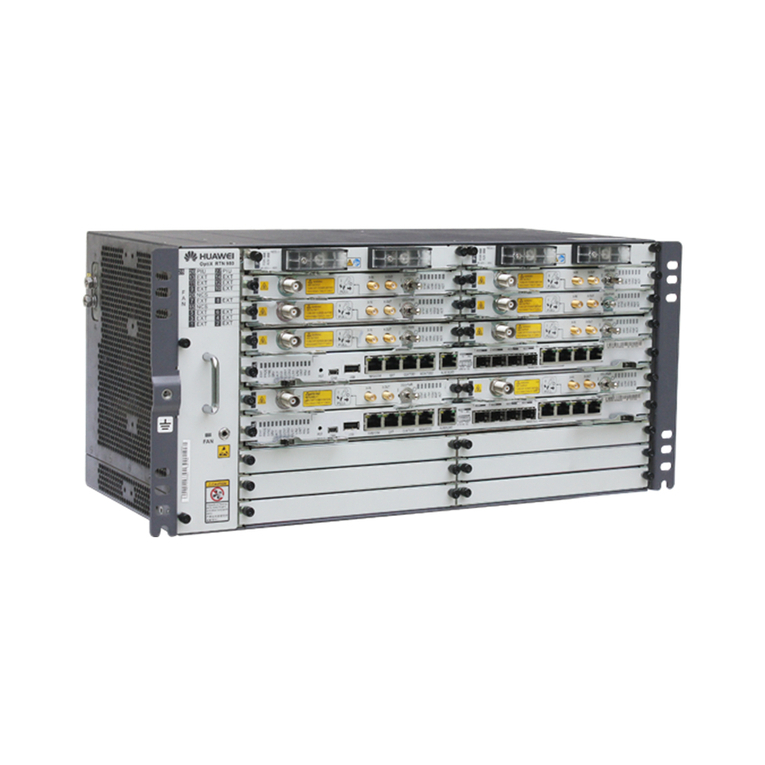
Huawei
Huawei OptiX RTN 980 User manual
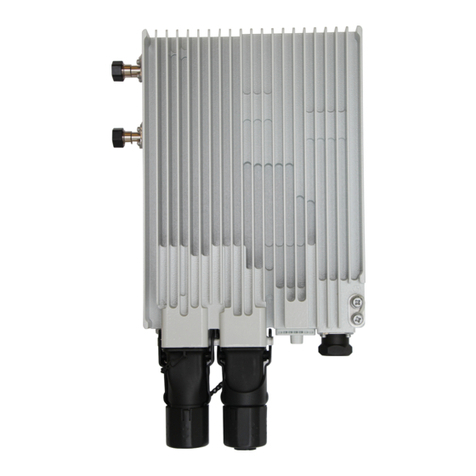
Huawei
Huawei OptiX RTN 320F User manual
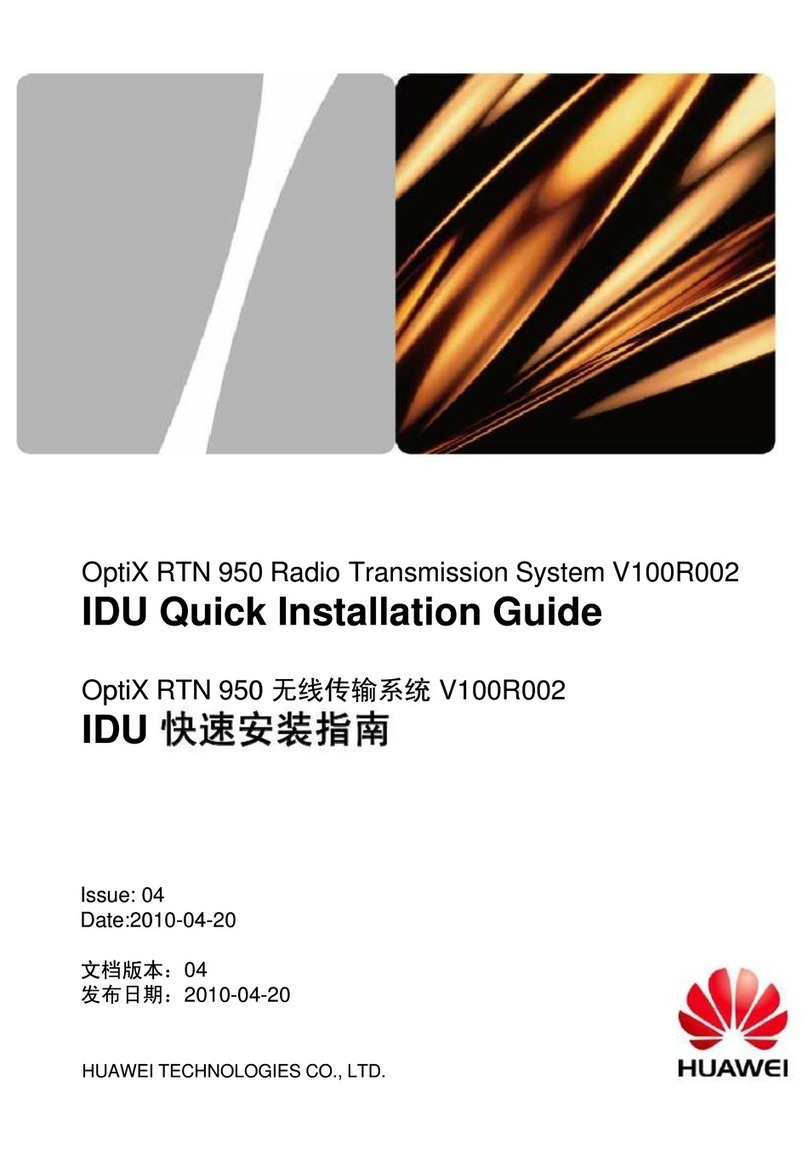
Huawei
Huawei OptiX RTN 950 User manual
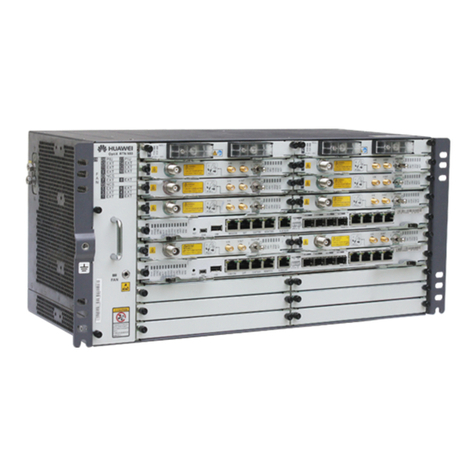
Huawei
Huawei OptiX RTN 980L V100 User manual
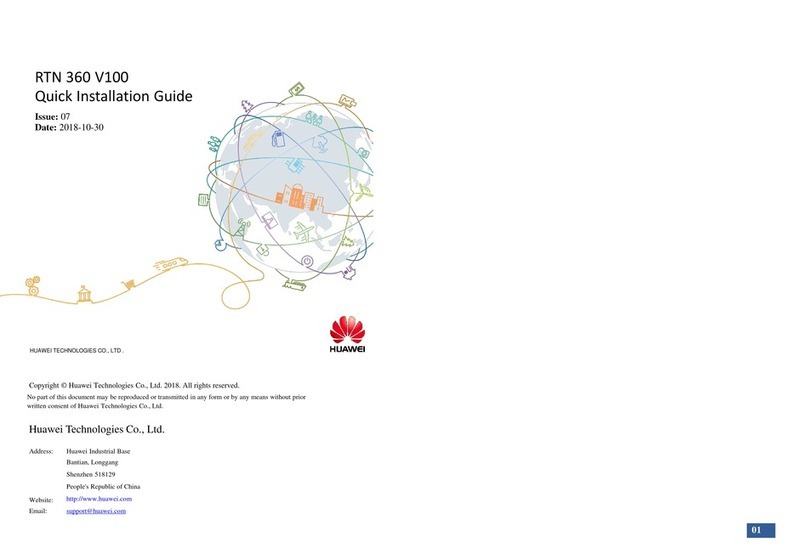
Huawei
Huawei RTN 360 V100 User manual
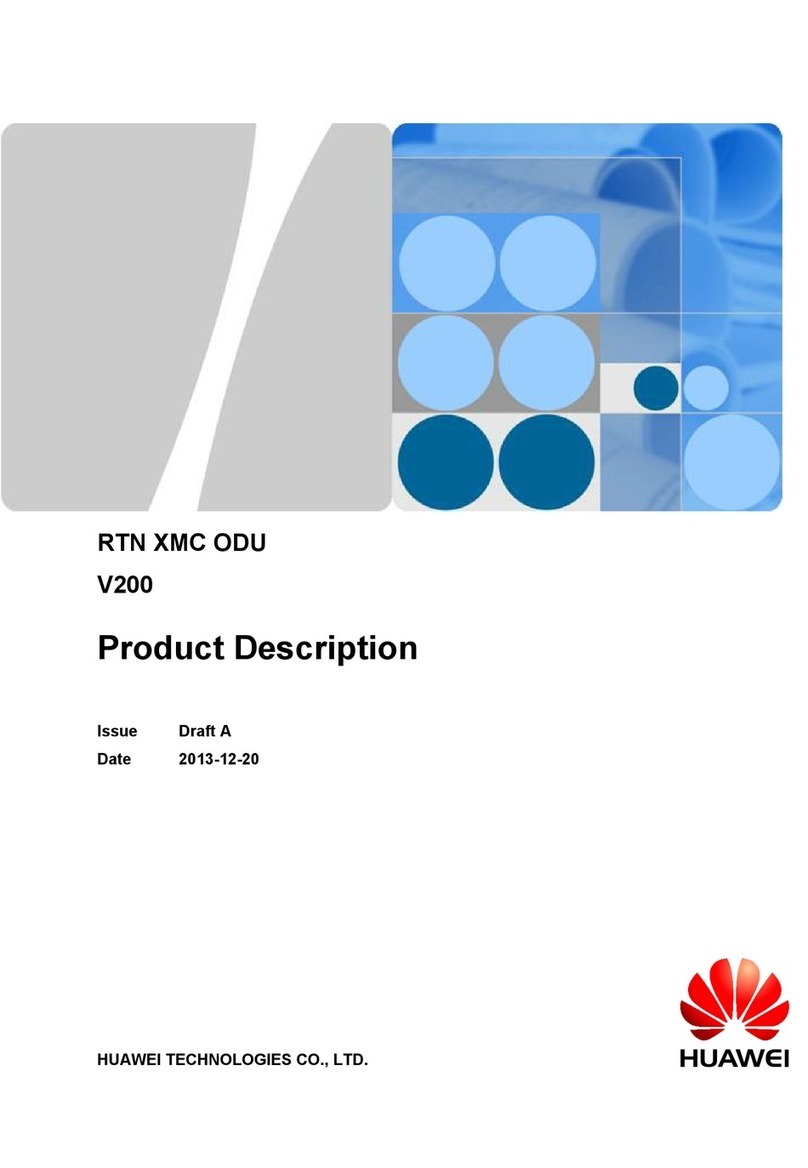
Huawei
Huawei RTN XMC ODU Technical specifications
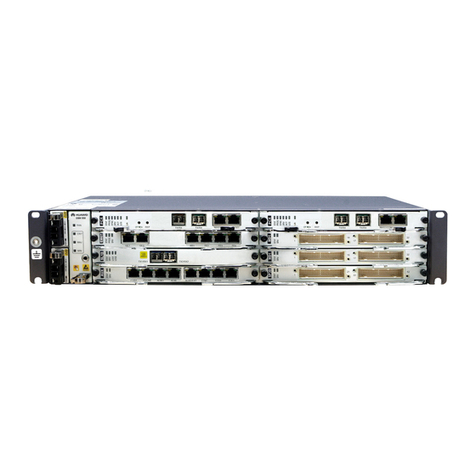
Huawei
Huawei OptiX OSN 550 User manual

Huawei
Huawei OptiX RTN 980 User manual
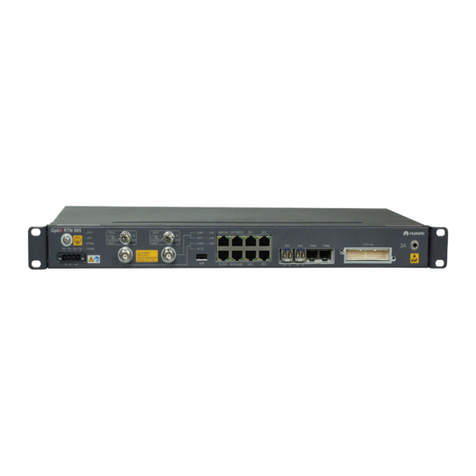
Huawei
Huawei OptiX RTN 905 User manual
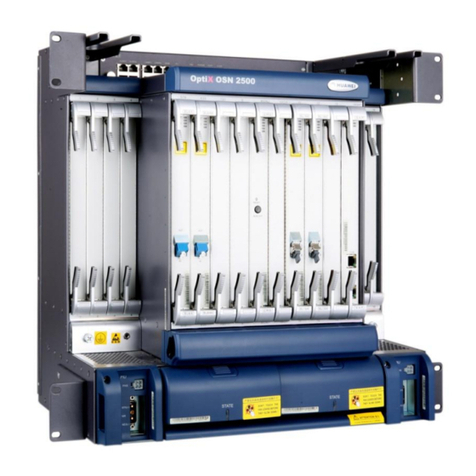
Huawei
Huawei OptiX OSN 2500 User manual
